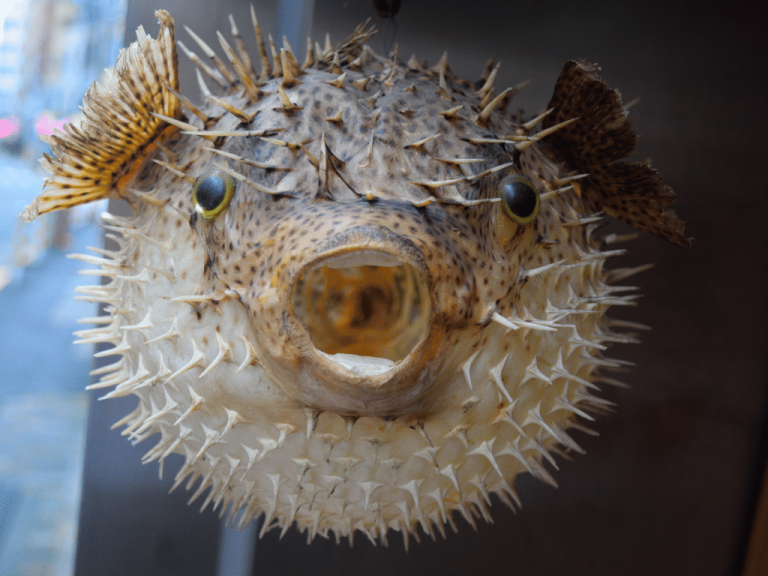When fishermen catch a pufferfish, it will make a squeaking sound from its throat as soon as it is placed on the boat, and its belly will quickly swell up.
Why does a pufferfish’s body swell up? This question has yet to be conclusively answered by zoologists. Some believe that when a pufferfish encounters a threat, it inflates its belly suddenly to intimidate its opponent. Others think that by inhaling air, its body weight significantly decreases, allowing its belly to float upwards, enabling it to drift with the wind and currents across the vast ocean. Another explanation is that when left stranded on a beach at low tide, it inhales a large amount of air to alleviate breathing difficulties by supplementing its oxygen supply. Among these explanations, the idea that it inflates its belly as a form of self-defense is the most reasonable. For instance, when it suddenly inflates in the water, it would be difficult for any predator without a sufficiently large mouth to swallow it. In reality, although it sometimes inflates in the water, it mostly inflates in the air. Therefore, many scientists believe that pufferfish inflate their bellies when they feel threatened.
A related species, the porcupinefish, also known as the blowfish, has backward-pointing spines all over its body. When it absorbs enough water, its body swells up like a ball, with all its spines standing erect, resembling a prickly chestnut. This is an instinctive behavior. However, pufferfish do not possess such “skills” as the porcupinefish, and their spines are not as numerous. Only when they are young do pufferfish have some spines on their skin and often inflate their bellies. As they grow, these spines disappear, and their habit of inflating gradually diminishes. Observations indicate that most fish species related to pufferfish have nearly lost their spines and the habit of inflating, while pufferfish themselves have long lost their spines entirely, and the habit of inflating is also in the process of fading away.

